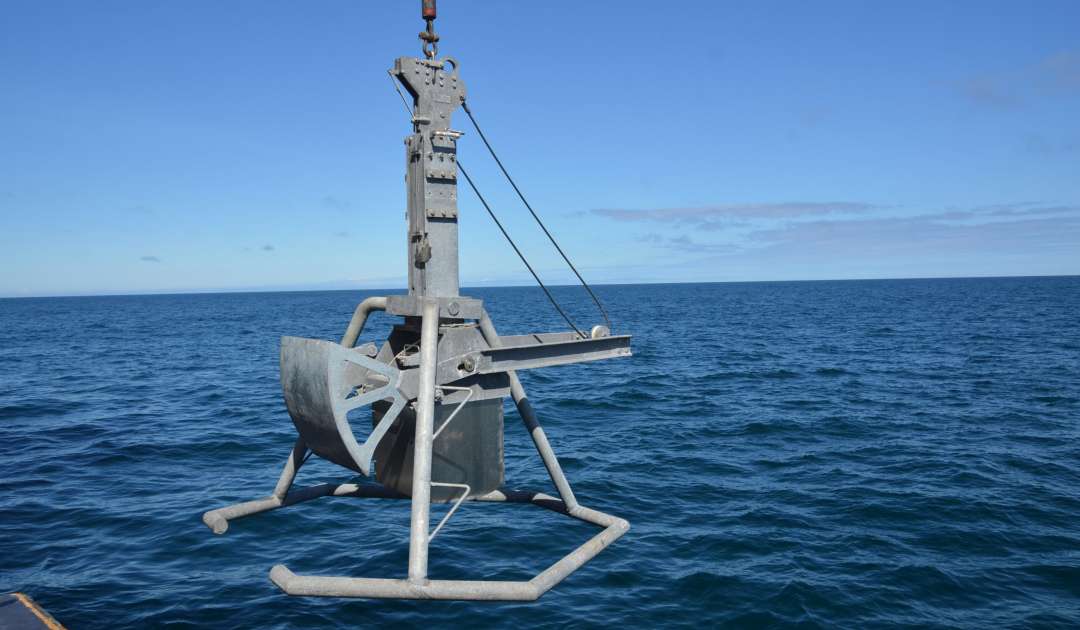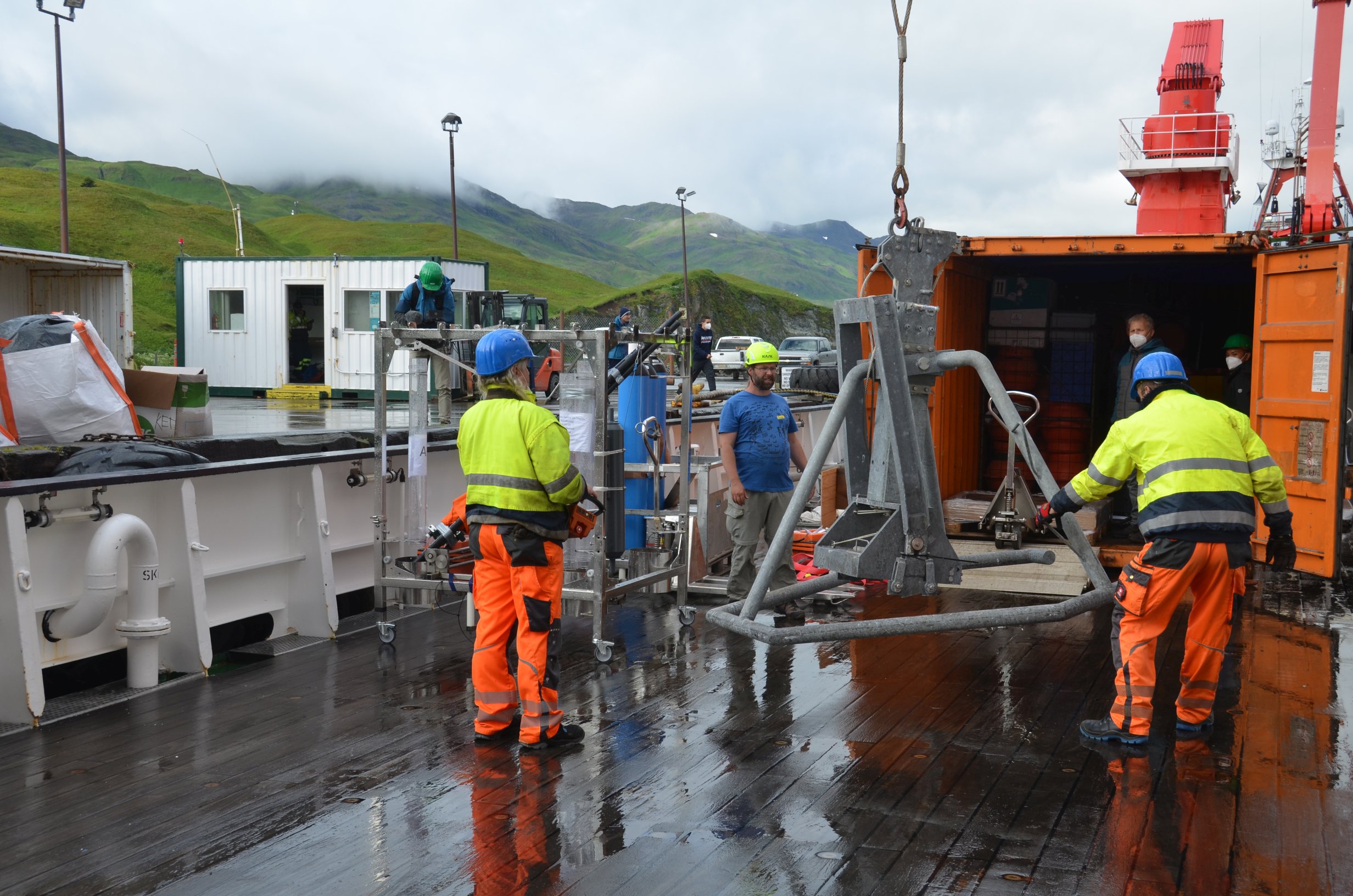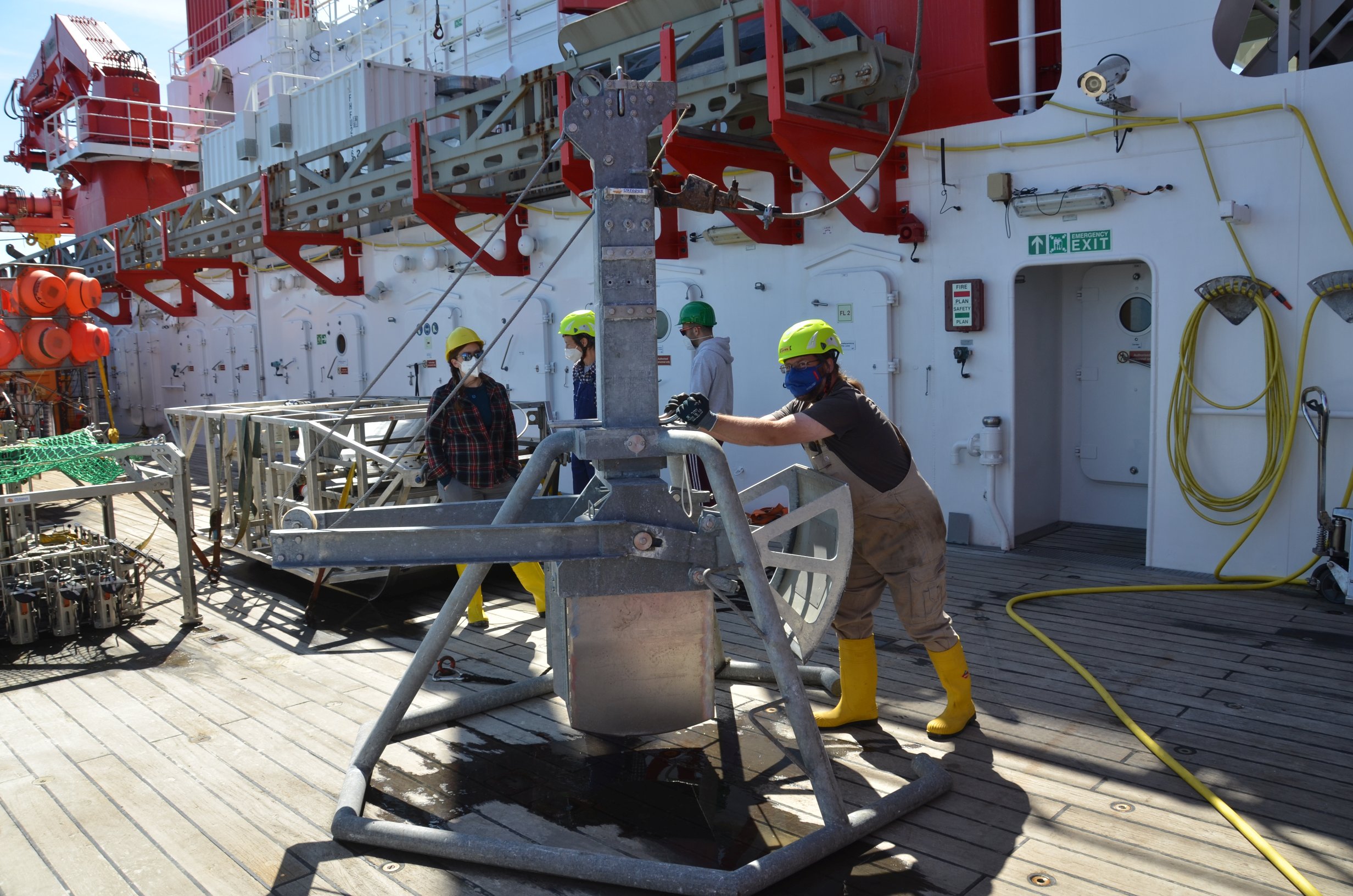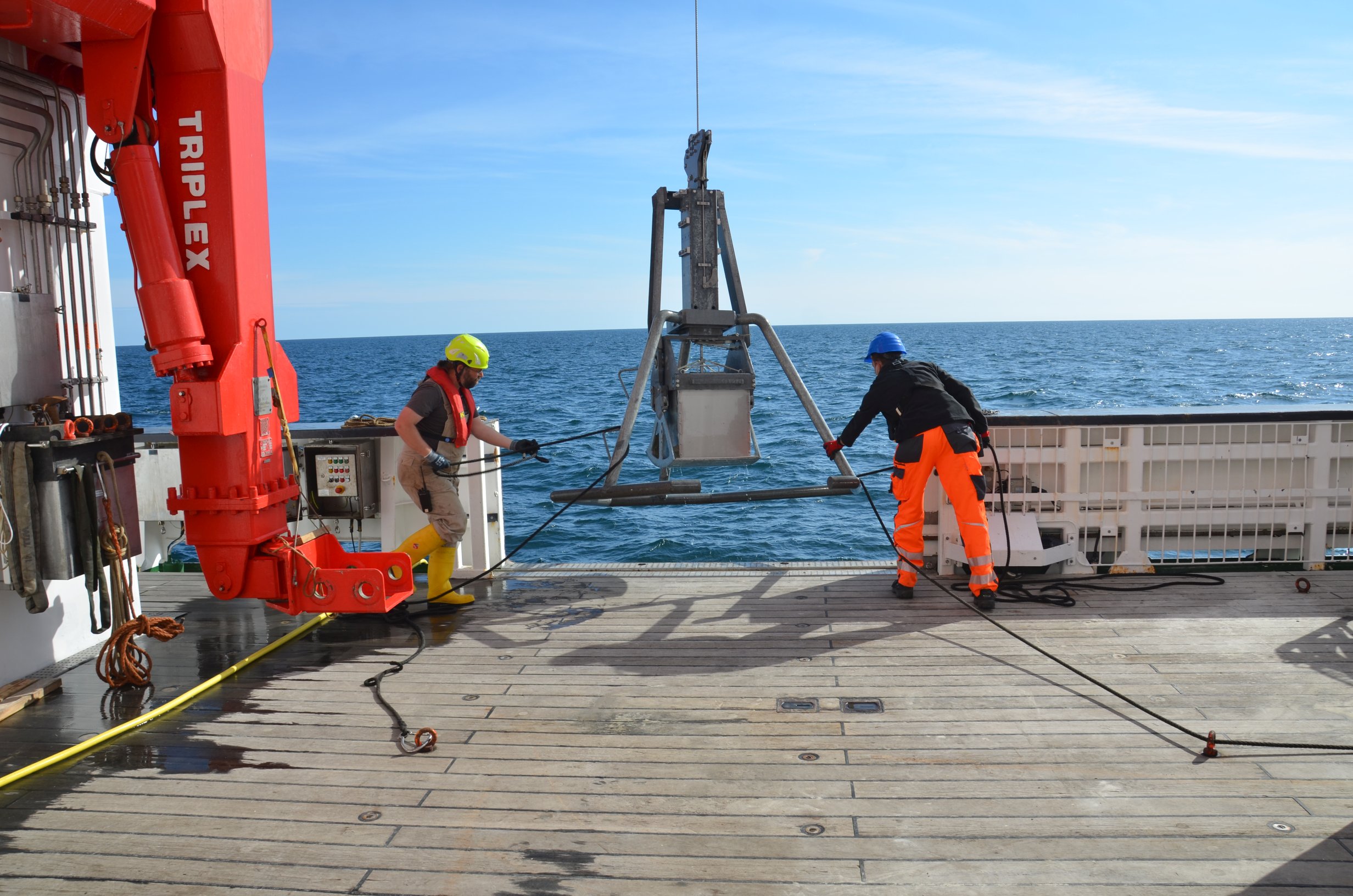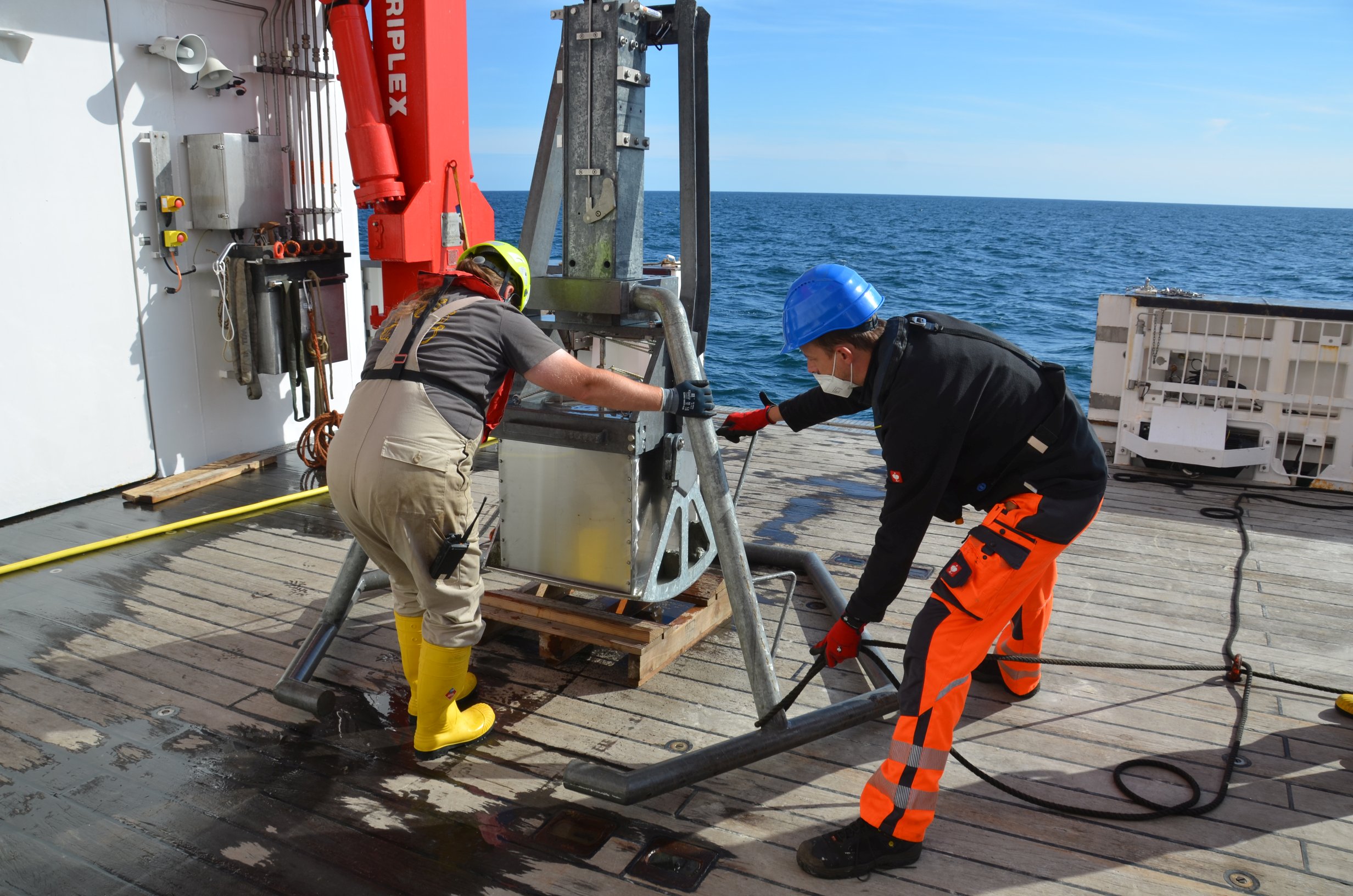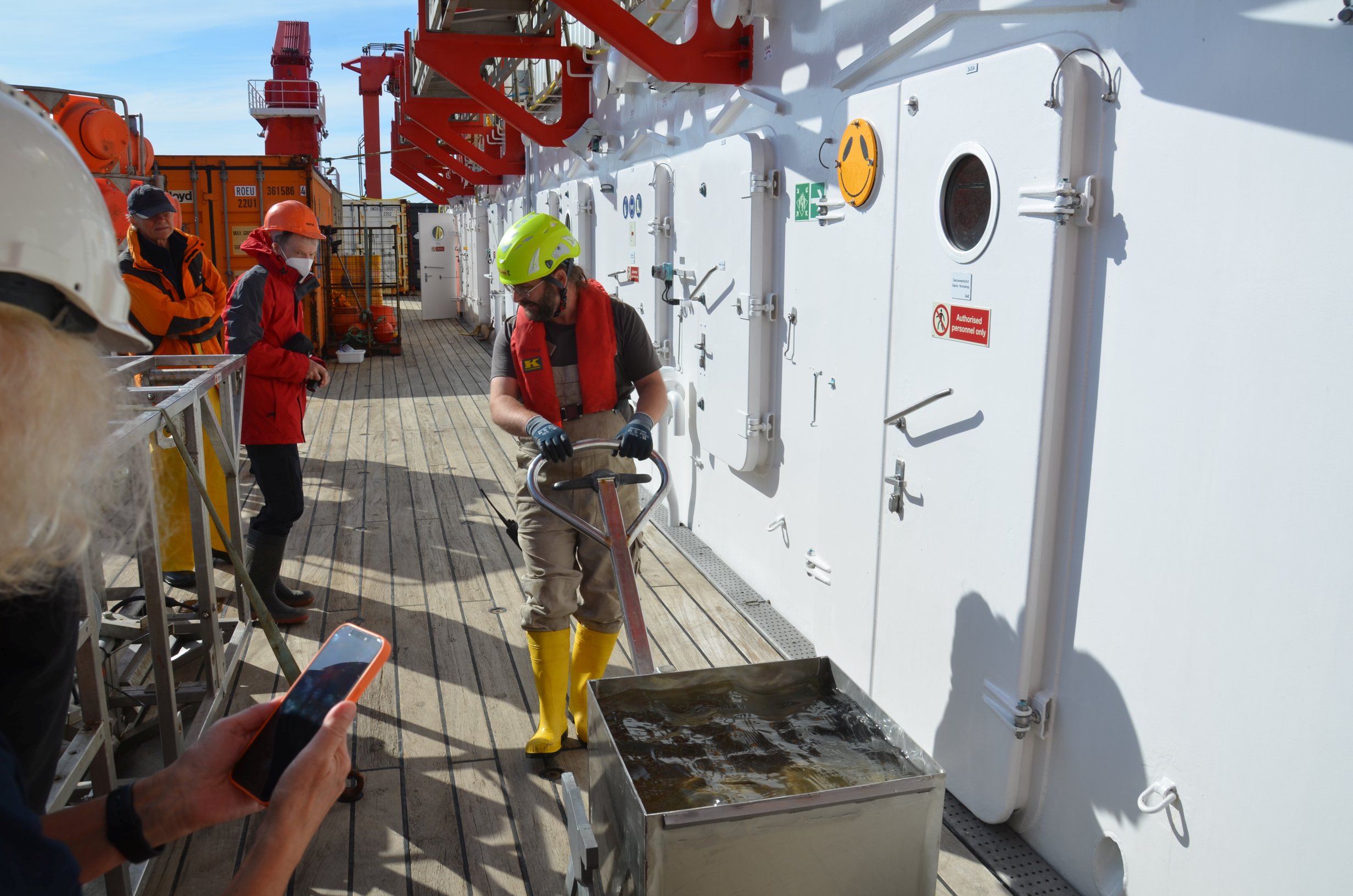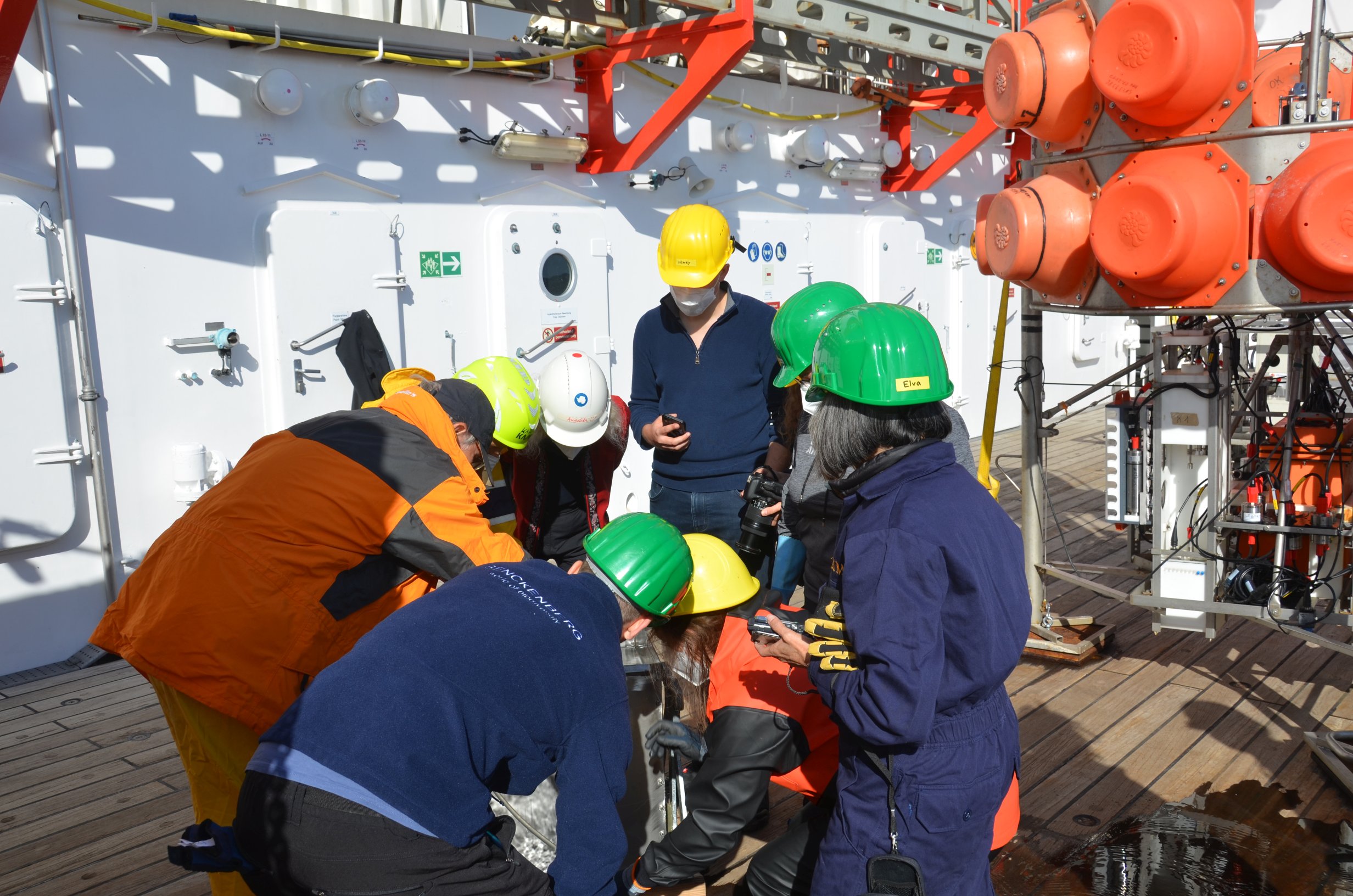The first station in the Bering Sea
We reached our first station in the Bering Sea after a day of steaming. The seabed here is not so well explored, therefore we know almost nothing about its topography and life here. That is why it is always important to make a good map of the seabed at the beginning. For this purpose, the RV Sonne has several multibeam sonar arrays on board for different applications. With one of them, the colleagues from the bathymetry team created a map of the area of the station where we planned to take samples. After the heads of the different equipment teams, together with the chief scientist, had determined the exact coordinates for the instruments, the deployment of the large equipment began.
Here and at each of our stations, we will try to use all 7 pieces of equipment to obtain information on the life in the Bering Sea and Aleutian Trench as comprehensively as possible.
For my part, I am responsible for the box-corer. This device, which weighs about one metric ton, cuts out a 50 cm x 50 cm area of the seabed and brings it onto the ship. By defining the area, we can later calculate how many animals of which species are found here per square meter of seabed.
When our box-corer was back on deck after its first mission and we had removed the sample box, we were surrounded by our colleagues. No one wanted to miss a glimpse of the almost undisturbed piece of seabed! Some animals could be seen on the surface, but most of the animals live in the top sediment layer. We only find these later, when the box corer team has washed the sample through sieves and then sorted the animals under the microscope.
For our first station, we had perfect weather with sunshine and calm sea. Unfortunately, it will not stay like this. Handling large-scale heavy sampling equipment is not easy in heavier seas, and is then far more dangerous. But RV Sonne has a super good, well experienced crew who know how to handle such situations.
Best regards from the Bering Sea,
Sven Hoffmann
Senckenberg at the Sea, DZMB
